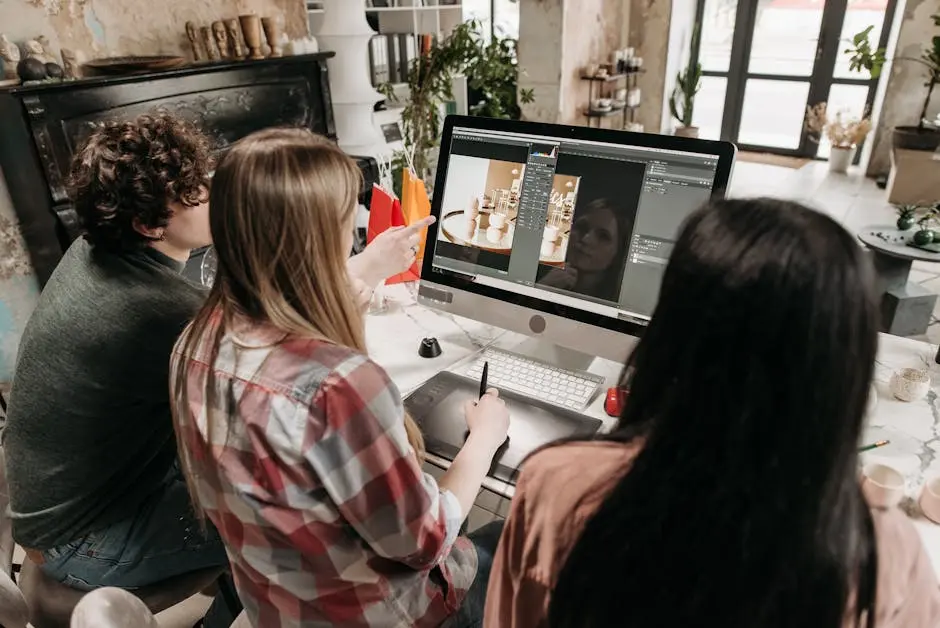Harnessing Pattern Inspiration for Stunning Design Projects

Patterns are all around us, offering endless potential for inspiration. In design projects, patterns can elevate aesthetics and functionality. Let’s dive into how you can effectively harness pattern inspiration for your next stunning design.
Understanding the Basics of Patterns
Before diving into creating stunning designs, it’s essential to grasp what patterns are and why they captivate us. Patterns bring order, repetition, and visual interest, forming the backbone of many design elements.
The human brain is naturally wired to recognize patterns, a trait that aids in navigation, memory retention, and even survival. This instinctual appreciation means that incorporating patterns into design holds the power to attract attention and evoke emotions. A pattern's repetitive nature stabilizes and organizes chaos, making it an incredibly versatile tool in the designer’s toolkit. Whether through symmetry, rhythm, or harmony, patterns introduce structure in a sea of randomness. Utilizing these fundamental principles can serve different design purposes, from guiding a viewer's eyes across a webpage to enhancing user experience in product packaging.
Discover how Roam can help calculate fair project fees using AI for your patterned designs and confidently navigate client relationships. Understanding your worth is critical when dedicating time and talent to a pattern-forward project, providing you with the leverage needed to negotiate effectively. Starting on the right foot with proper pricing mechanisms ensures that your artistic efforts are adequately valued.
Drawing Inspiration from Nature
Nature is one of the most abundant sources of pattern inspiration. From spirals in seashells to fractal patterns in leaves, the natural world offers a diverse palette of designs that can be translated into unique patterns for your projects.
Taking a cue from the breathtaking patterns in natural landscapes can invigorate your creative process, enabling you to mimic the complexities of nature in your designs. Consider the radial symmetry found in flowers, which can be used to evoke balance and beauty when transposed onto a digital canvas. Likewise, the undulating lines of riverbeds and sand dunes can inspire fluidity and movement in designs that aim to capture a sense of dynamics and energy.
By venturing outdoors, designers can draw from the colors, shapes, and textures that exist outside the confines of the studio. Sketchbooks and cameras become invaluable tools in capturing fleeting moments of natural beauty that later inform design projects. Designers often find that by detailing the geometry evident in flower petals and the meandering curves of vines, they create not just patterns, but stories that resonate with viewers on a primal level.
Exploring Cultural Patterns
Cultures worldwide have distinct patterns that reflect their histories and traditions. Exploring these can add depth to your design projects, infusing them with cultural richness and stories.
The rich tapestry of cultural patterns, from the intricate weavings of the Andean communities to the bold, geometric motifs of African tribes, offers designers a gateway into exploring diverse visual languages. Each pattern speaks its own cultural dialect, providing insights into the values, philosophies, and rituals of different societies. By integrating these elements, designers can craft narratives that resonate across cultures, emphasizing unity in diversity.
Incorporating cultural patterns is more than decorative—it’s about honoring the origins and the people who create them. This approach necessitates a deep dive into research and understanding, ensuring authenticity and respect in the design process. Designers can collaborate with cultural ambassadors or delve into archival research to inform accurate representations of traditional patterns. The results are designs that not only echo age-old practices but also open dialogues about cultural exchange and preservation.
Utilizing Technology to Create Patterns
With advancements in technology, creating intricate patterns has never been easier. Design software allows for limitless experimentation, enabling designers to develop stunning new patterns with ease.
Technology expands the realm of possibilities for pattern creation, allowing designers to push boundaries through innovative software. Tools like Adobe Illustrator and Sketch offer robust features, including pattern creators that streamline the generation of repetitive motifs. These technological advancements liberate designers from manual constraints, making it possible to explore and iterate complex designs swiftly.
Moreover, the availability of augmented reality and AI tools further enhances pattern design, providing interactive experiences that engage audiences like never before. Applications can now simulate the movement and interaction of patterns in real-time, inviting users to interact with design elements dynamically. This interactivity is opening up new pathways for user engagement across digital platforms, from immersive websites to virtual reality experiences.
Experimenting with Simplicity and Complexity
Patterns can vary from simple to complex, and experimenting with both can lead to surprising results. Simplicity can bring elegance, while complexity can offer intrigue and detail to your designs.
Simple patterns, such as polka dots or stripes, when applied strategically, evoke a sense of class and timelessness. These can bring a minimalist appeal that aligns seamlessly with modern design aesthetics. On the flip side, intricate patterns, like those found in paisleys or baroques, can turn surfaces into tapestries of storytelling, each twist and turn in the design a new chapter in the narrative.
When combining simple and intricate patterns, designers must pay careful attention to balance and harmony. A keen eye is required to ensure that complexity doesn’t overpower or detract from the overall message. Design tools offer functionalities to layer and juxtapose patterns, allowing experimentation without the risk of design clutter. This versatility supports the creation of sophisticated designs that walk the fine line between order and chaos, drawing viewers in with their depth and elegance.
Unlocking the Power of Patterns
Patterns are a treasure trove of inspiration waiting to be tapped into. By understanding the basics, drawing from nature, appreciating cultural influences, and experimenting with technology, you can create captivating design projects. Embrace the simplicity or complexity of patterns and watch your designs transform.
Roam: Run your design business, not just your projects. Intuitive business management tools for graphic designers


.png)





